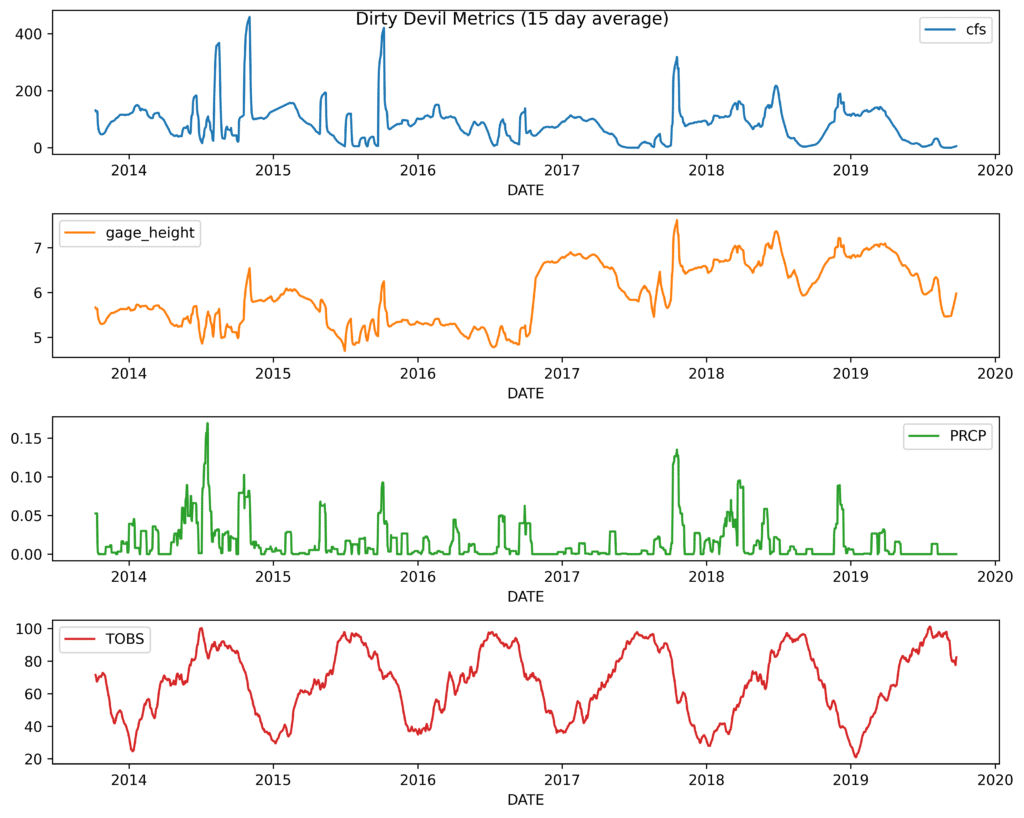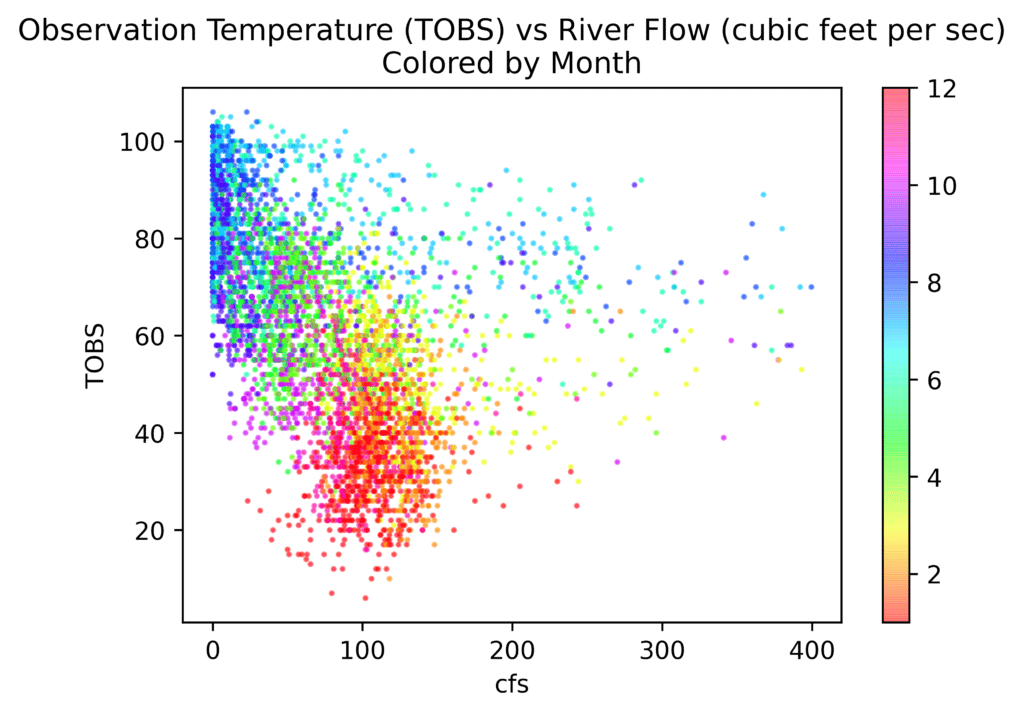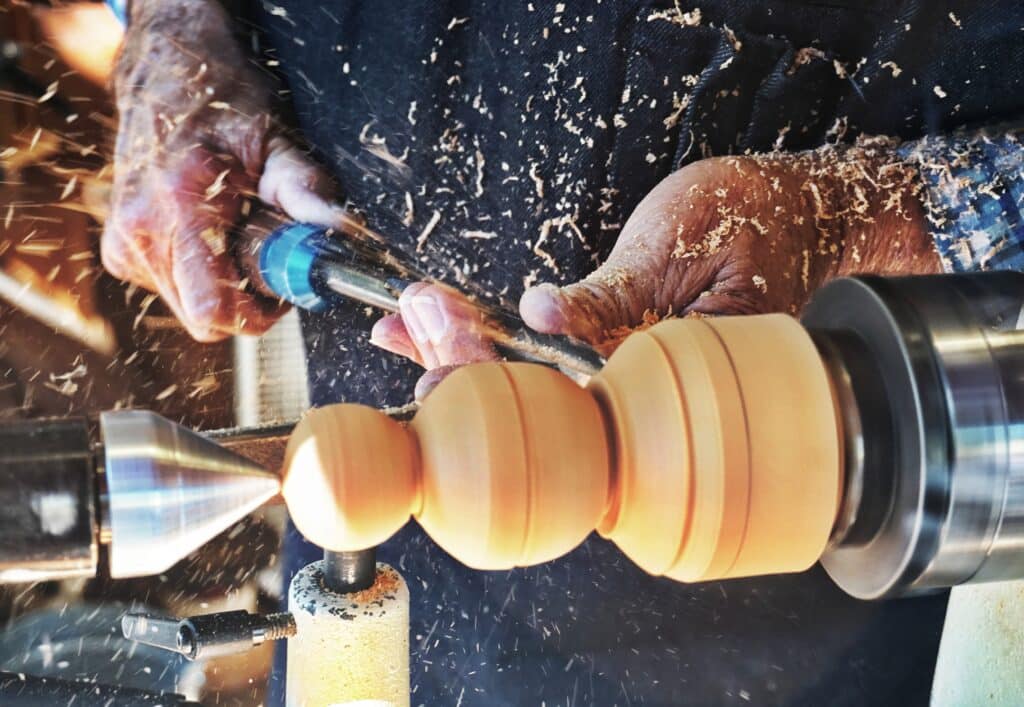
Intro
In this post, I discuss the relationship between the Pandas merge function (and Pandas merge method), and the Pandas join method, and then show examples of how to merge Pandas dataframes with the merge method. Along the way, I describe two useful merge method parameters: thevalidateparameter, and theindicatorparameter.
This article is the second in our Professional Pandas blog post series. The goal of this series is to teach best practices about writing professional-grade Pandas code. If you have questions or topics that you would like to dive into, please reach out on Twitter to @ponderdata or @__mharrison__, and if you’d like to see the notebook version of this blogpost, you can find it on Github here.
(Note: This content is modified from the author’s book, Effective Pandas.)
Try Ponder Today
Start running pandas and NumPy in your database within minutes!
Joining Data
Terminology Refresher: Method vs. Function
Pandas often has one, two, three, or even more ways to do something. This paradox of choice can be overwhelming. (Indeed software engineering purists would say “There should be one– and preferably only one –obvious way to do it.”) However, here we are with Pandas joining.
- The
.joinmethod found on a DataFrame - The
.mergemethod found on a DataFrame - The
pd.mergefunction found in the Pandas namespace (pd) - The
pd.concatfunction to horizontally or vertically stack data - Various methods that align on the index and work similar to some joins (like using
df.assign(**other_df))
A Quick Aside on the Python Language
A Python class defines methods. Methods are called on an instance of a class. In the Pandas world, we often have a DataFrame (df) or Series (s) instance. We could call the merge method by saying:
In [1]:df.merge(another_df)However, there is also a function, merge. Generally, when folks use Pandas they import the library like this:
In [2]:import pandas as pdSince pd is the module where the Pandas merge function is available, you can call the merge function like this:
In [3]:pd.merge(df, another_df)Some think that in this last example thatmergeis a method onpd. That is not correct. If we change the import to load the function, we could run the code like this:
In [4]:from pandas import merge
merge(df, another_df)If you aren’t familiar with the difference between methods and functions and would like to explore more, check out the Python tutorial.
End of the Aside
From this author's point of view, forget that the Pandas merge function and the join method exist. You can get along just fine only using the merge method (which I will often refer to in this article as .merge with a period in front as a reminder that it needs to be called on the instance).
In fact, if you dig into the implementation of .join, you will see that it calls the concat or merge functions. Don't waste your brain power trying to keep them straight. Just ignore the merge function and the join method.
One final note, I wish that.mergewas named.joinbecause everyone coming from a database world knows what a join is, but.mergeoffers a little more functionality, hence my recommendation to favor it.
A Short Overview of Joining
Feel free to skip this if you are familiar with database joins. It shows the basic joins using some sales data. Our task might be to find products with no sales, sales that don’t have products, or only sales for products that we have information for.
The supported join types for.merge(specified with thehowparameter) are:
'left'– Keep all values from the merging column DataFrame the method was called on.'right'– Keep all values from the merging column of therightDataFrame the method was called on.'inner'– Keep the intersection of all values from the merging columns.'outer'– Keep the union of all values from the merging columns.'cross'– For every row in the instance dataframe, combine with every row from therightDataFrame.
In [5]:import pandas as pd
products = pd.DataFrame({'id': [1, 3, 10], 'product':
['Cat food', 'Sparkling Water', 'Apple Fritter']})
sales = pd.DataFrame({'product_id': [1, 3, 1, 1, 15],
'cost': [4.99, .99, 4.99, 4.99*.8, 7.45]})Left Join
In [6]:# keep all *id* columns
products.merge(sales, left_on='id', right_on='product_id', how='left')
Out [6]: id product product_id cost
0 1 Cat food 1.0 4.990
1 1 Cat food 1.0 4.990
2 1 Cat food 1.0 3.992
3 3 Sparkling Water 3.0 0.990
4 10 Apple Fritter NaN NaNRight Join
In [7]:# keep all *product_id* columns
products.merge(sales, left_on='id', right_on='product_id', how='right')
Out [7]: id product product_id cost
0 1.0 Cat food 1 4.990
1 3.0 Sparkling Water 3 0.990
2 1.0 Cat food 1 4.990
3 1.0 Cat food 1 3.992
4 NaN NaN 15 7.450Inner Join
In [8]:products.merge(sales, left_on='id', right_on='product_id', how='inner')
Out [8]: id product product_id cost
0 1 Cat food 1 4.990
1 1 Cat food 1 4.990
2 1 Cat food 1 3.992
3 3 Sparkling Water 3 0.990Outer Join
In [9]:products.merge(sales, left_on='id', right_on='product_id', how='outer')
Out [9]: id product product_id cost
0 1.0 Cat food 1.0 4.990
1 1.0 Cat food 1.0 4.990
2 1.0 Cat food 1.0 3.992
3 3.0 Sparkling Water 3.0 0.990
4 10.0 Apple Fritter NaN NaN
5 NaN NaN 15.0 7.450Cross Join
A merge you might not be aware of is the cross join. This repeats every row of the dataframe with every row that it is merged with. (So this gets big real fast).
In [10]:# cross join
products.merge(sales, how='cross')
Out [10]: id product product_id cost
0 1 Cat food 1 4.990
1 1 Cat food 3 0.990
2 1 Cat food 1 4.990
3 1 Cat food 1 3.992
4 1 Cat food 15 7.450
5 3 Sparkling Water 1 4.990
6 3 Sparkling Water 3 0.990
7 3 Sparkling Water 1 4.990
8 3 Sparkling Water 1 3.992
9 3 Sparkling Water 15 7.450
10 10 Apple Fritter 1 4.990
11 10 Apple Fritter 3 0.990
12 10 Apple Fritter 1 4.990
13 10 Apple Fritter 1 3.992
14 10 Apple Fritter 15 7.450A cross join might come in hand if you need to create all the permutations of some values. In this example, all ways to select three different values from four or ten.
In [11]:nums = pd.DataFrame({'values':[4, 10]})
(nums
.merge(nums, how='cross')
.merge(nums, how='cross')
)
Out [11]: values_x values_y values
0 4 4 4
1 4 4 10
2 4 10 4
3 4 10 10
4 10 4 4
5 10 4 10
6 10 10 4
7 10 10 10Validation Using the Pandas Merge Method
I will sometimes use a .pipe method to track the size of my data before and after the merge. If you are doing a lot of merges, this will be a snippet of code you will want to keep around.
(Check out the article Professional Pandas: The Pandas Assign Method for more examples of the .pipe method.)
In [12]:def debug_shape(a_df, comment=''):
print(f'{a_df.shape} {comment}')
return a_df
(products
.pipe(debug_shape, 'before merge')
.merge(sales, left_on='id', right_on='product_id', how='outer')
.pipe(debug_shape, 'after merge')
)
Out [12]:(3, 2) before merge
(6, 4) after merge
id product product_id cost
0 1.0 Cat food 1.0 4.990
1 1.0 Cat food 1.0 4.990
2 1.0 Cat food 1.0 3.992
3 3.0 Sparkling Water 3.0 0.990
4 10.0 Apple Fritter NaN NaN
5 NaN NaN 15.0 7.450A very nice feature of the Pandas merge method is thevalidateparameter. It allows us to specify if our merge should be one to one ('1:1'), one to many ('1:m'), many to one ('m:1'), or many to many ('m:m').
If your data grows much faster after a merge that might be because you are merging on duplicate values. In our example, the product_id repeats in theproductsDataFrame. If we were expecting only a single row for the Cat food product and one row fromsalesfor each row fromproduct, we could pass invalidate='1:1' parameter.
In this case, Pandas complains that the entries from sales are not unique. This is because there were multiple sales for the Cat food product:
In [13]:(products
.merge(sales, left_on='id', right_on='product_id', how='outer',
validate='1:1')
)
Out [13]:---------------------------------------------------------------------------
MergeError Traceback (most recent call last)
in
1 (products
2 .merge(sales, left_on='id', right_on='product_id', how='outer',
----> 3 validate='1:1')
4 )
3 frames
/usr/local/lib/python3.7/dist-packages/pandas/core/reshape/merge.py in _validate(self, validate)
1428 elif not right_unique:
1429 raise MergeError(
-> 1430 "Merge keys are not unique in right dataset; not a one-to-one merge"
1431 )
1432
MergeError: Merge keys are not unique in right dataset; not a one-to-one mergeWe would need to use validate='1:m' on this example:
In [14]:(products
.merge(sales, left_on='id', right_on='product_id', how='outer',
validate='1:m')
)
Out [14]: id product product_id cost
0 1.0 Cat food 1.0 4.990
1 1.0 Cat food 1.0 4.990
2 1.0 Cat food 1.0 3.992
3 3.0 Sparkling Water 3.0 0.990
4 10.0 Apple Fritter NaN NaN
5 NaN NaN 15.0 7.450
(Note that specifying validate='m:m' can't ever fail, but it could be a nice indicator to whoever reads the code next.)
One more parameter to be aware of is the indicator parameter. This allows us to create a new column indicating which DataFrame the resulting row came from. In this example we specify that the new column should be named side:
In [15]:(products
.merge(sales, left_on='id', right_on='product_id', how='outer',
indicator='side')
)
Out [15]: id product product_id cost side
0 1.0 Cat food 1.0 4.990 both
1 1.0 Cat food 1.0 4.990 both
2 1.0 Cat food 1.0 3.992 both
3 3.0 Sparkling Water 3.0 0.990 both
4 10.0 Apple Fritter NaN NaN left_only
5 NaN NaN 15.0 7.450 right_onlyExample: Joining Dirty Devil Flow and Weather Data Using the Pandas Merge Method
Now let’s look at a real-world example.
We are going to explore data from the Dirty Devil river. This is a river in Utah that the author had some interest in floating down. However, it is only floatable during a small period of time each year. This analysis was part of his attempt to determine when would be a good time to float down this river.
I have some historic data about the flow of the Dirty Devil river on my Github. Let’s load the flow (cubic feet per second, or cfs) and gage height data. In this case we will leave the datetime column as a column and not use it for the index:
In [16]:import pandas as pd
url = 'https://github.com/mattharrison/datasets/raw/master'\
'/data/dirtydevil.txt'<br>
df = pd.read_csv(url, skiprows=lambda num: num <34 or num == 35,
sep='\t')
def to_denver_time(df_, time_col, tz_col):
return (df_
.assign(**{tz_col: df_[tz_col].replace('MDT', 'MST7MDT')})
.groupby(tz_col)
[time_col]
.transform(lambda s: pd.to_datetime(s)
.dt.tz_localize(s.name, ambiguous=True)
.dt.tz_convert('America/Denver'))
)
def tweak_river(df_):
return (df_
.assign(datetime=to_denver_time(df_, 'datetime', 'tz_cd'))
.rename(columns={'144166_00060': 'cfs',
'144167_00065': 'gage_height'})
)
dd = tweak_river(df)
dd
Out [16]:/usr/local/lib/python3.7/dist-packages/IPython/core/interactiveshell.py:3326: DtypeWarning: Columns (7) have mixed types.Specify dtype option on import or set low_memory=False.
exec(code_obj, self.user_global_ns, self.user_ns)
agency_cd site_no datetime tz_cd cfs 144166_00060_cd gage_height 144167_00065_cd
0 USGS 9333500 2001-05-07 01:00:00-06:00 MDT 71.00 A:[91] NaN NaN
1 USGS 9333500 2001-05-07 01:15:00-06:00 MDT 71.00 A:[91] NaN NaN
2 USGS 9333500 2001-05-07 01:30:00-06:00 MDT 71.00 A:[91] NaN NaN
3 USGS 9333500 2001-05-07 01:45:00-06:00 MDT 70.00 A:[91] NaN NaN
4 USGS 9333500 2001-05-07 02:00:00-06:00 MDT 70.00 A:[91] NaN NaN
... ... ... ... ... ... ... ... ...
539300 USGS 9333500 2020-09-28 08:30:00-06:00 MDT 9.53 P 6.16 P
539301 USGS 9333500 2020-09-28 08:45:00-06:00 MDT 9.20 P 6.15 P
539302 USGS 9333500 2020-09-28 09:00:00-06:00 MDT 9.20 P 6.15 P
539303 USGS 9333500 2020-09-28 09:15:00-06:00 MDT 9.20 P 6.15 P
539304 USGS 9333500 2020-09-28 09:30:00-06:00 MDT 9.20 P 6.15 P
539305 rows × 8 columnsI’m also going to load some meteorological data from Hanksville, Utah, a city nearby the river. We will then use the Pandas merge method to join both datasets together so we have flow data as well as temperature and precipitation information.
Some of the columns that are interesting are:
- DATE – Date
- PRCP – Precipitation in inches
- TMIN – Minimum temperature (F) for day
- TMAX – Maximum temperature (F) for day
- TOBS – Observed temperature (F) when measurement made
In [17]:url = 'https://github.com/mattharrison/datasets/raw/master/data/'\
'hanksville.csv'
temp_df = pd.read_csv(url)
def tweak_temp(df_):
return (df_
.assign(DATE=pd.to_datetime(df_.DATE)
.dt.tz_localize('America/Denver', ambiguous=False))
.loc[:,['DATE', 'PRCP', 'TMIN', 'TMAX', 'TOBS']]
)
temp_df = tweak_temp(temp_df)
temp_df
Out [17]: DATE PRCP TMIN TMAX TOBS
0 2000-01-01 00:00:00-07:00 0.02 21.0 43.0 28.0
1 2000-01-02 00:00:00-07:00 0.03 24.0 39.0 24.0
2 2000-01-03 00:00:00-07:00 0.00 7.0 39.0 18.0
3 2000-01-04 00:00:00-07:00 0.00 5.0 39.0 25.0
4 2000-01-05 00:00:00-07:00 0.00 10.0 44.0 22.0
... ... ... ... ... ...
6843 2020-09-20 00:00:00-06:00 0.00 46.0 92.0 83.0
6844 2020-09-21 00:00:00-06:00 0.00 47.0 92.0 84.0
6845 2020-09-22 00:00:00-06:00 0.00 54.0 84.0 77.0
6846 2020-09-23 00:00:00-06:00 0.00 47.0 91.0 87.0
6847 2020-09-24 00:00:00-06:00 0.00 43.0 94.0 88.0
6848 rows × 5 columnsJoining Data
Let's use the Pandas merge method to merge by date. This method will try to merge by columns that have the same name, but our dataframes don't have overlapping column names. Thedddataframe has a datetime column andtemp_dfhas a DATE column. We can use theleft_onandright_onparameters to help it know how to align the data. Themergemethod tries to do an inner join by default. That means that rows with values that are the same in the merge columns will be joined together:
In [18]:(dd
.merge(temp_df, left_on='datetime', right_on='DATE')
)
Out [18]: agency_cd site_no datetime tz_cd cfs 144166_00060_cd gage_height 144167_00065_cd DATE PRCP TMIN TMAX TOBS
0 USGS 9333500 2001-05-08 00:00:00-06:00 MDT 75.00 A:[91] NaN NaN 2001-05-08 00:00:00-06:00 0.0 43.0 85.0 58.0
1 USGS 9333500 2001-05-09 00:00:00-06:00 MDT 64.00 A:[91] NaN NaN 2001-05-09 00:00:00-06:00 0.0 36.0 92.0 64.0
2 USGS 9333500 2001-05-10 00:00:00-06:00 MDT 54.00 A:[91] NaN NaN 2001-05-10 00:00:00-06:00 0.0 50.0 92.0 67.0
3 USGS 9333500 2001-05-11 00:00:00-06:00 MDT 56.00 A:[91] NaN NaN 2001-05-11 00:00:00-06:00 0.0 46.0 87.0 60.0
4 USGS 9333500 2001-05-12 00:00:00-06:00 MDT 49.00 A:[91] NaN NaN 2001-05-12 00:00:00-06:00 0.0 45.0 93.0 72.0
... ... ... ... ... ... ... ... ... ... ... ... ... ...
4968 USGS 9333500 2020-09-20 00:00:00-06:00 MDT 6.04 P 6.04 P 2020-09-20 00:00:00-06:00 0.0 46.0 92.0 83.0
4969 USGS 9333500 2020-09-21 00:00:00-06:00 MDT 6.83 P 6.07 P 2020-09-21 00:00:00-06:00 0.0 47.0 92.0 84.0
4970 USGS 9333500 2020-09-22 00:00:00-06:00 MDT 6.83 P 6.07 P 2020-09-22 00:00:00-06:00 0.0 54.0 84.0 77.0
4971 USGS 9333500 2020-09-23 00:00:00-06:00 MDT 7.68 P 6.10 P 2020-09-23 00:00:00-06:00 0.0 47.0 91.0 87.0
4972 USGS 9333500 2020-09-24 00:00:00-06:00 MDT 9.86 P 6.17 P 2020-09-24 00:00:00-06:00 0.0 43.0 94.0 88.0
4973 rows × 13 columnsThis appears to have worked, but is somewhat problematic. Remember that thedddataset has a 15-minute frequency, buttemp_dfonly has daily data, so we are only using the value from midnight. We should probably use our resampling skills to calculate the median flow value for each date and then merge. In that case we will want to use the index of the grouped data to merge, so we specifyleft_index=True:
In [19]:(dd
.groupby(pd.Grouper(key='datetime', freq='D'))
.median()
.merge(temp_df, left_index=True, right_on='DATE')
)
Out [19]: site_no cfs gage_height DATE PRCP TMIN TMAX TOBS
492 9333500.0 71.50 NaN 2001-05-07 00:00:00-06:00 0.0 41.0 82.0 55.0
493 9333500.0 69.00 NaN 2001-05-08 00:00:00-06:00 0.0 43.0 85.0 58.0
494 9333500.0 63.50 NaN 2001-05-09 00:00:00-06:00 0.0 36.0 92.0 64.0
495 9333500.0 55.00 NaN 2001-05-10 00:00:00-06:00 0.0 50.0 92.0 67.0
496 9333500.0 55.00 NaN 2001-05-11 00:00:00-06:00 0.0 46.0 87.0 60.0
... ... ... ... ... ... ... ... ...
6843 9333500.0 6.83 6.07 2020-09-20 00:00:00-06:00 0.0 46.0 92.0 83.0
6844 9333500.0 6.83 6.07 2020-09-21 00:00:00-06:00 0.0 47.0 92.0 84.0
6845 9333500.0 7.39 6.09 2020-09-22 00:00:00-06:00 0.0 54.0 84.0 77.0
6846 9333500.0 7.97 6.11 2020-09-23 00:00:00-06:00 0.0 47.0 91.0 87.0
6847 9333500.0 9.53 6.16 2020-09-24 00:00:00-06:00 0.0 43.0 94.0 88.0
6356 rows × 8 columnsThat looks better (and gives us a few more rows of data).
Validating Joined Data
Let's validate that we had a one-to-one join, i.e. each date from the flow data matched up with a single date from the temperature data. We can use the validate parameter to do this:
In [20]:(dd
.groupby(pd.Grouper(key='datetime', freq='D'))
.median()
.merge(temp_df, left_index=True, right_on='DATE', how='inner',
validate='1:1')
)
Out [20]: site_no cfs gage_height DATE PRCP TMIN TMAX TOBS
492 9333500.0 71.50 NaN 2001-05-07 00:00:00-06:00 0.0 41.0 82.0 55.0
493 9333500.0 69.00 NaN 2001-05-08 00:00:00-06:00 0.0 43.0 85.0 58.0
494 9333500.0 63.50 NaN 2001-05-09 00:00:00-06:00 0.0 36.0 92.0 64.0
495 9333500.0 55.00 NaN 2001-05-10 00:00:00-06:00 0.0 50.0 92.0 67.0
496 9333500.0 55.00 NaN 2001-05-11 00:00:00-06:00 0.0 46.0 87.0 60.0
... ... ... ... ... ... ... ... ...
6843 9333500.0 6.83 6.07 2020-09-20 00:00:00-06:00 0.0 46.0 92.0 83.0
6844 9333500.0 6.83 6.07 2020-09-21 00:00:00-06:00 0.0 47.0 92.0 84.0
6845 9333500.0 7.39 6.09 2020-09-22 00:00:00-06:00 0.0 54.0 84.0 77.0
6846 9333500.0 7.97 6.11 2020-09-23 00:00:00-06:00 0.0 47.0 91.0 87.0
6847 9333500.0 9.53 6.16 2020-09-24 00:00:00-06:00 0.0 43.0 94.0 88.0
6356 rows × 8 columnsBecause this did not raise a MergeError, we know that our data had non-repeating date fields.
Visualization of Data Joined with the Pandas Merge Method
I'm a big fan of visualization. Let's visualize the merged time series. We will add on to our merge chain, stick the date in the index (so that we can plot it on the x-axis), pull out the years from 2014 forward, use thecfs(cubic feet per second),gage_height,PRCP, andTOBScolumns, interpolate the missing values, do a rolling 15-day average, and plot the result in their own subplot:
In [21]:import matplotlib.pyplot as plt
fig, ax = plt.subplots(dpi=600, figsize=(10,8))
(dd
.groupby(pd.Grouper(key='datetime', freq='D'))
.median()
.merge(temp_df, left_index=True, right_on='DATE', how='inner',
validate='1:1')
.set_index('DATE')
.loc['2014':,['cfs', 'gage_height', 'PRCP', 'TOBS']]
.interpolate()
.rolling(15)
.mean()
.plot(subplots=True, ax=ax)
)
fig.suptitle('Dirty Devil Metrics (15-day average)')
fig.tight_layout()
Out [21]:
Here’s another plot that is kind of cool once you piece together what is happening. It is a scatterplot of temperature against river flow. I’m coloring this by month of the year. You can see the start of the year at the bottom of the plot. As the year progresses and the temperature warms up, the cfs goes up a little, and then as summer hits, the river almost dries up. During the fall, it starts to cool off and the river starts running higher:
In [22]:fig, ax = plt.subplots(dpi=600)
dd2 = (dd
.groupby(pd.Grouper(key='datetime', freq='D'))
.median()
.merge(temp_df, left_index=True, right_on='DATE', how='inner',
validate='1:1')
.query('cfs < 400')
)
(dd2
.plot.scatter(x='cfs', y='TOBS', c=dd2.DATE.dt.month,
ax=ax, cmap='hsv', alpha=.5, s=2)
)
ax.set_title('Observation Temperature (TOBS) '
'vs River Flow (cubic feet per sec)\nColored by Month')
Out [22]:
Summary
Data can often have more utility if we combine it with other data. In the '70s, relational algebra was invented to describe various joins among tabular data. The Pandas merge method of the DataFrame lets us apply these operations to tabular data in the Pandas world. This post explored using the Pandas merge method and the parameters you can use to validate your joining logic.
We would love to hear your feedback. Was this helpful? Did you learn anything new? Tag @ponderdata and @__mharrison__ on Twitter with your insights, and follow both for more content like this. And feel free to suggest new topics you’d like us to dive into for our next Professional Pandas blog post!
About Ponder
Ponder is the company driving Modin and pushing to scale Pandas with you. If you want to scale your Pandas code out to large datasets by changing a single line of code, try the Modin library. If you need help running your Pandas workloads in production at scale, talk to us!




